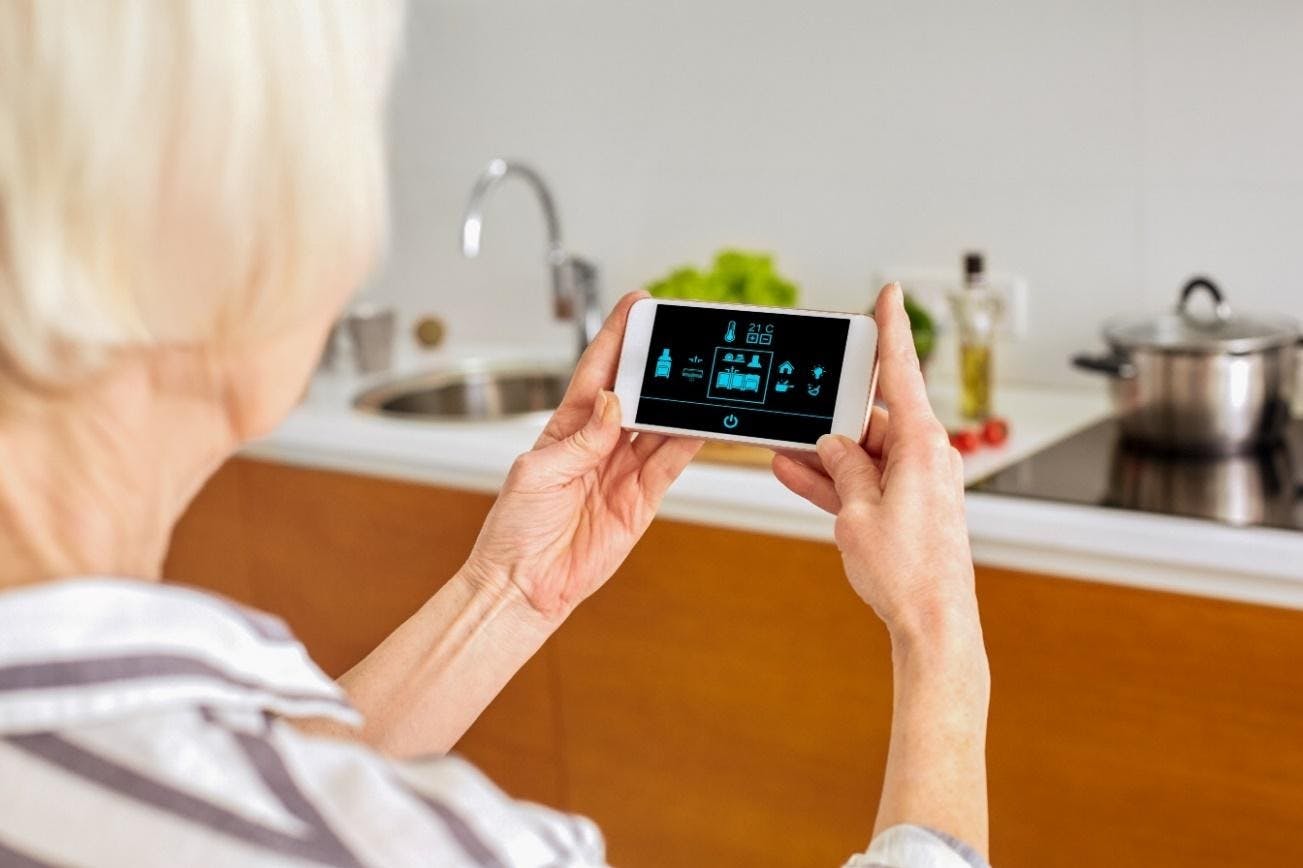We recently discussed the many reasons for home shortages in our region and nationally. They range from challenges with local permitting and zoning to build more homes to the difficulty for many individuals to save for a down payment.
There is another reason not covered in the previous blog post: A growing number of people are aging in place. Researchers with Freddie Mac believe about 1.6 million homes nationwide are “held back” from the open market by seniors living in their homes longer.
Aging in place is nothing new but the needs around the house are calling for greater technology to support the living arrangement. This goes beyond adding grab bars in the bath or creating universal design for the entire household to enjoy. It’s also about being equipped with the latest gadgets and gizmos to maintain a safe and satisfying living.
The Census Bureau says that by 2034 older people will outnumber children for the first time. There will be 77 million Americans at least 65 years of age compared to 76.5 million under the age of 18. By the year 2024, all baby boomers (born 1946-1964) will be in their 60s or older.
The older set generally prefer to age in place because they like their communities and quality of life. Frankly, few people look forward to making a big change such as moving. That’s why it’s sound advice to invest in some integrated tech for the home.
There are three main components to a smart home for seniors. They include reliable, high-speed internet, a system of sensors and security alarms (SimpliSafe and Nest Secure Alarm System are two that come recommended by tech sites), and a voice assistant powered by a smart speaker hub such as Amazon Echo, Apple HomePod or Google Home. (Tip: Pick one of these three operating systems – usually the same on your phone – and be sure the rest of your home tech will “talk” to it before buying.)
SEE OTHER STORIES IN OUR HOME TECH SERIES
Smart Advice When Planning for a Smarter Home on a Budget
Getting Smart With Smart-Home Technology
Making Your Kitchen Smarter One Appliance at a Time
Making Your Bathroom Smarter One Fixture at a Time
Technically Speaking: Is Your Seattle Home Secure?
The No. 1 cause of injury in the home is from falling – in the shower or other slippery surface, from uneven flooring or tripping on a chair leg. Falls account for about a third of all injuries in the home and 28% of all people 65 or older suffer from a fall each year.
Home tech can help in the event of a fall. GreatCall offers a phone app and pendant that uses GPS with a gyroscope to allow caretakers to track the whereabouts of a person. Phillips Hue has motion-sensitive pathway lighting for indoor/outdoor use to help reduce slips and trips around the property. And Aladin makes a smart lamp designed for seniors.
To be sure, seniors are experiencing better health in general and living longer. A majority are comfortable using email or video conferencing to stay in touch with their friends, family and health-care providers.
The home telehealth industry has exploded since early 2020 when many states discouraged going out and about, including visits to medical facilities. Doctors’ office personnel or health insurance representatives should be able to offer guidance on how to connect virtually with a medical expert.
In addition, there are many health-care video apps on the market that support this trend in secure video communications through the phone or computer. MDLive and Lemonaid Health have high ratings among users.
Companies are also developing devices to stand in as digital companions for seniors. The devices encourage active participation – nudge them to go for a walk after sitting for long periods, offer to play audiobooks or music, and announce scheduling reminders. A company called intuition robotics uses artificial intelligence to, in its words, “create an emotional bond” between customer and product.
For more information on tech in the home, check out this Aging In Place site for ideas to make life easier and safer. There are also resources and programs to help people prevent falls in the home.
Taking decisive action to make your home smarter today, will only help make you and your household safer tomorrow.




